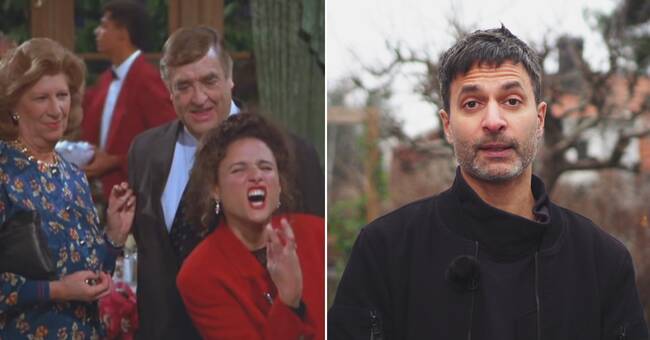Most of the laugh tracks on television were recorded in the early 1950s. These days, most of the people you hear laughing are dead. ”
This is how Fight Club author Chuck Palahniuk wrote about so-called canned laughter in his novel Lullaby (2002).
Even though his reconnaissance is half right, he puts his finger on something most people recognize:
There's something creepy about canned laughter.
This is despite studies that show that jokes are more fun with such than without.
The canned
laughter arose from scarcity: the American sound engineer Charles Douglass was annoyed by the audience's inability to laugh at the right time.
In 1953, he invented The Laff Box - a typewriter-like play that was played like an organ and contained labels such as "housewife rivets" and "guy who takes the joke early".
Although colleagues considered his invention an insult to the intelligence of the television audience, it gave him work for decades.
No one was allowed to touch the mythical box, except Douglas' immediate family.
TV series such as Bewitched, The Beverly Hillbillies and The Brady Bunch are examples of Douglass' work.
Towards the 80s, canned laughter was considered increasingly outdated.
And the great comedy series of the 90's, such as Friends and Seinfeld, used a mixture of live audiences and canned laughter.
Perhaps it was the last death knell of canned laughter when director David Lynch used it in the series Rabbits (2002).
Three actors in rabbit costumes read grave nonsense lines interrupted by canned laughter in the "wrong place" - contrary to Douglas' vision.
In Rabbits, the very eerieness that Palahniuk describes in his novel thrives.
Today we are once again
facing a shortage.
The corona pandemic forbids us to be crowded in groups and the world's TV producers are scrambling in unison to solve the question of how to do TV entertainment without an audience.
In some Latin American countries, laughter has long been handled by reidores - laughers - men and women who are employed to laugh at a given signal.
The job description sounds as outdated as that of the crying women, but the phenomenon has recently become highly topical in Sweden as well.
In the entertainment program Svenska Nyheter, it is the studio man Emma Eklöf who alone replaces the audience's laughter.
And På Spåret, which premiered on Saturday, has in the last programs (which were recorded after the tightened restrictions) persuaded a handful of SVT colleagues to act as audiences.
However, it is doubtful whether SVT's laughers can replace an entire arena audience.
In front of us awaits the gala season with giant productions such as the Sports Gala, P3 Gold, the Golden Bug Gala and Mello.
Empty arenas can feel quite desolate.
The question is whether or not that old box of laughter is starting to look quite interesting again.

